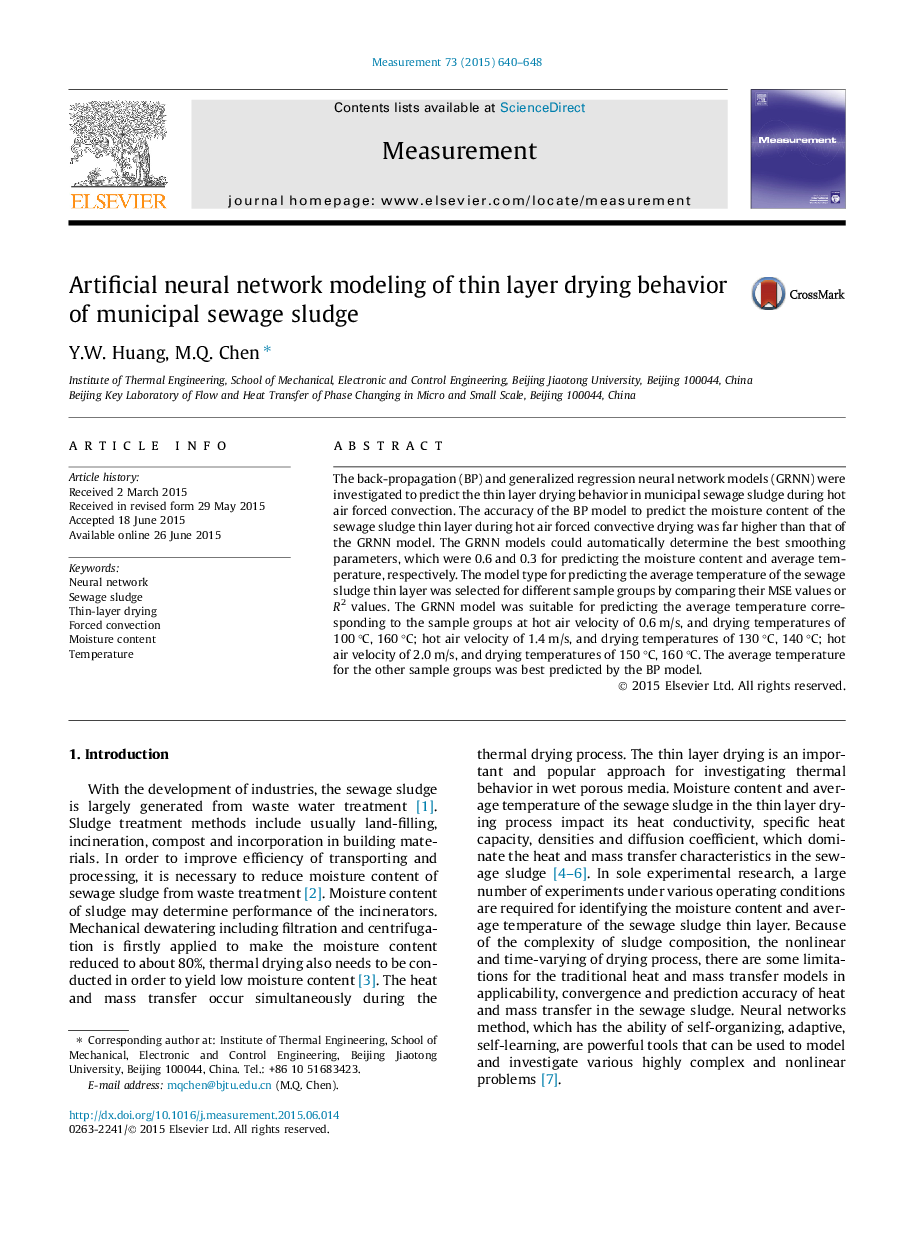| Article ID | Journal | Published Year | Pages | File Type |
|---|---|---|---|---|
| 727312 | Measurement | 2015 | 9 Pages |
•Predictive modeling of sewage sludge thin layer drying was studied.•Heat and mass transfer were predicted by both BP and GRNN models.•BP model predicted the mass transfer more accurately than the GRNN model.•The best smoothing parameters of GRNN model were obtained.
The back-propagation (BP) and generalized regression neural network models (GRNN) were investigated to predict the thin layer drying behavior in municipal sewage sludge during hot air forced convection. The accuracy of the BP model to predict the moisture content of the sewage sludge thin layer during hot air forced convective drying was far higher than that of the GRNN model. The GRNN models could automatically determine the best smoothing parameters, which were 0.6 and 0.3 for predicting the moisture content and average temperature, respectively. The model type for predicting the average temperature of the sewage sludge thin layer was selected for different sample groups by comparing their MSE values or R2 values. The GRNN model was suitable for predicting the average temperature corresponding to the sample groups at hot air velocity of 0.6 m/s, and drying temperatures of 100 °C, 160 °C; hot air velocity of 1.4 m/s, and drying temperatures of 130 °C, 140 °C; hot air velocity of 2.0 m/s, and drying temperatures of 150 °C, 160 °C. The average temperature for the other sample groups was best predicted by the BP model.
